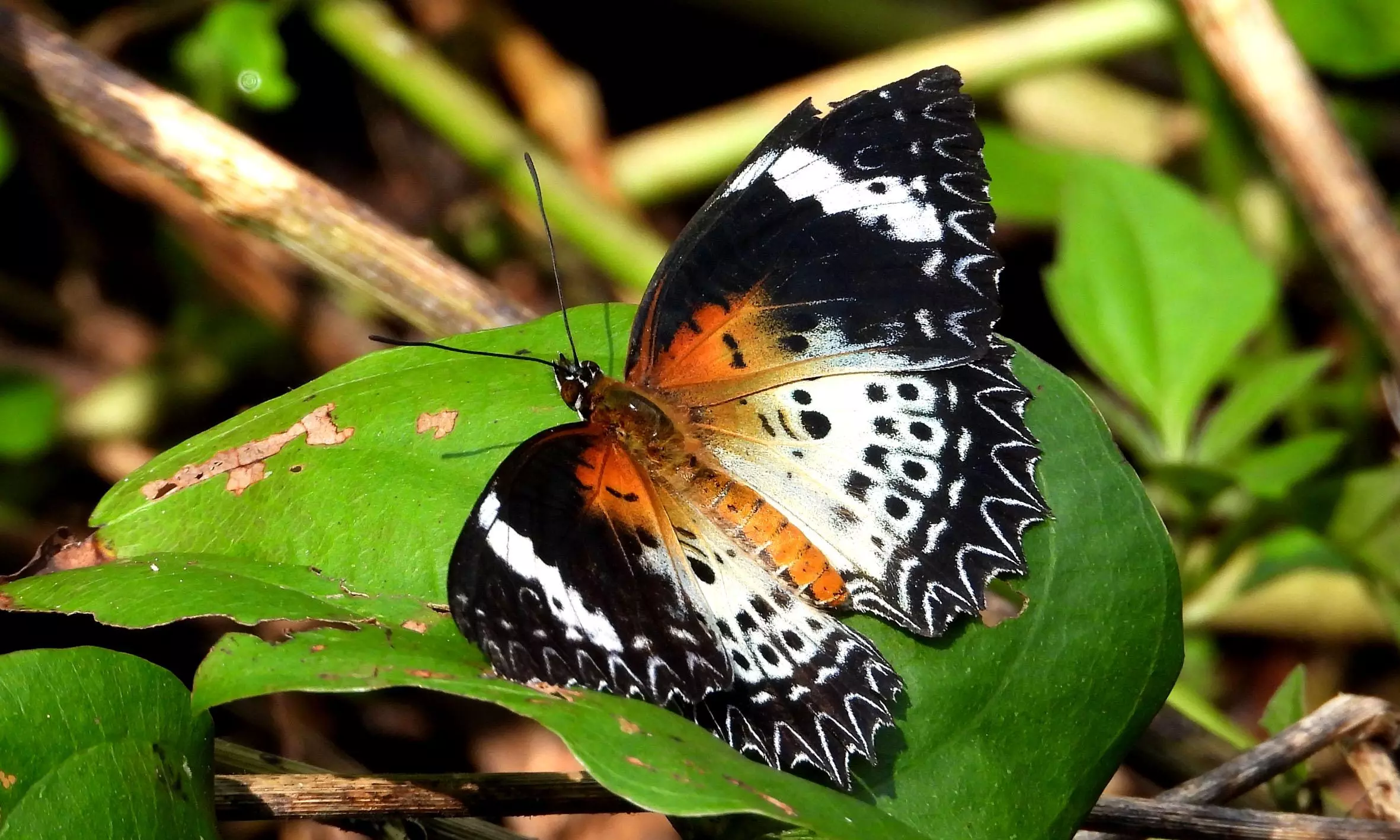AP’s rich butterfly diversity under threat from climate change
Butterflies, celebrated for their vibrant colours and breath-taking migrations, are incredibly sensitive to environmental changes

Visakhapatnam: Andhra Pradesh has a stunning variety of butterfly species, with experts and researchers documenting 273 butterfly species in the region. However, they are now increasingly worried about the threats these delicate creatures face due to climate change.
As per historical records of Zoological Survey of India (ZSI) and Butterfly Species Assessment Program (BSAP), as well as field surveys in locations like Papikondalu National Park, Seshachalam, Nallamala and North-Eastern Ghats, experts have identified butterfly species from across six families: 21 from Papilionidae, 66 from Hesperiidae, 26 from Pieridae, 2 from Riodinidae, 85 from Nymphalidae, and 73 from Lycaenidae.
Among the passionate individuals contributing to this vital research is Jimmy Carter Polimati, a wildlife photographer and environmentalist from Maredumilli in ASR district. Jimmy has identified 231 of the 273 butterfly species in the state, illuminating the region’s ecological richness. He points out that Andhra Pradesh has diverse habitats, including moist deciduous forests, scrub jungles, coastal plains, and the unique Nallamala and Seshachalam hills.
Jimmy highlights that hilltop grasslands, such as Gudisa, serve as crucial ecosystems for butterflies. Their destruction directly impacts the delicate butterfly lifecycle. Further, monoculture practices like shifting cultivation (podu) and habitat loss present serious threats to butterfly populations.
The environmental photographer passionately advocates afforestation initiatives, widespread public awareness campaigns, and educational programmes for children. He believes integrating butterflies and conservation lessons into school curricula is vital for instilling a sense of environmental responsibility at a young age.
There have been collaborative efforts to observe butterflies by researchers, including Goswami from Andhra University, scholars from Yogi Vemana University, and dedicated conservation enthusiasts like Rajesh Dasi, Rajasekhar Bandi, Dr. Kishor, Vivek Rathod, Appanna Saragada, B.V. Ramana, and Ramakrishna. Their work has led to over 8,000 butterfly sightings posted on platforms like iNaturalist, Ifoundbutterflies, Butterflies of India and the India Biodiversity Portal (IBP). This has led to identification of seven new genera of butterflies in Andhra Pradesh.
A decade-long study by Saragadam Appanna focusing on Eastern Ghats of Visakhapatnam district has revealed that 190 butterfly species inhabit the area. He hopes his work will focus attention on these vulnerable beings, of which 27 are protected under India’s Wildlife Protection Act (1972), while the International Union for Conservation of Nature (IUCN) lists nine as significant for conservation, including the critically endangered butterflies Peal's palm fly and Orchid Tit.
Significantly, butterflies, celebrated for their vibrant colours and breath-taking migrations, are incredibly sensitive to environmental changes. Their short lifespan of just two to four weeks makes them reliant on specific plants for breeding and survival. Sadly, rapid urbanisation, rising temperatures, declining rainfall and deforestation are leading to an alarming decline in their populations. Areas that once thrived with butterfly life, like Kambalakonda and Kailasagiri, have seen devastating losses.
The call for urgent collaborative conservation efforts to protect these fragile creatures has never been more critical. With Andhra Pradesh’s varied ecosystems offering a hopeful environment for butterflies, preserving these habitats will require a compassionate commitment of communities, researchers and policymakers.

